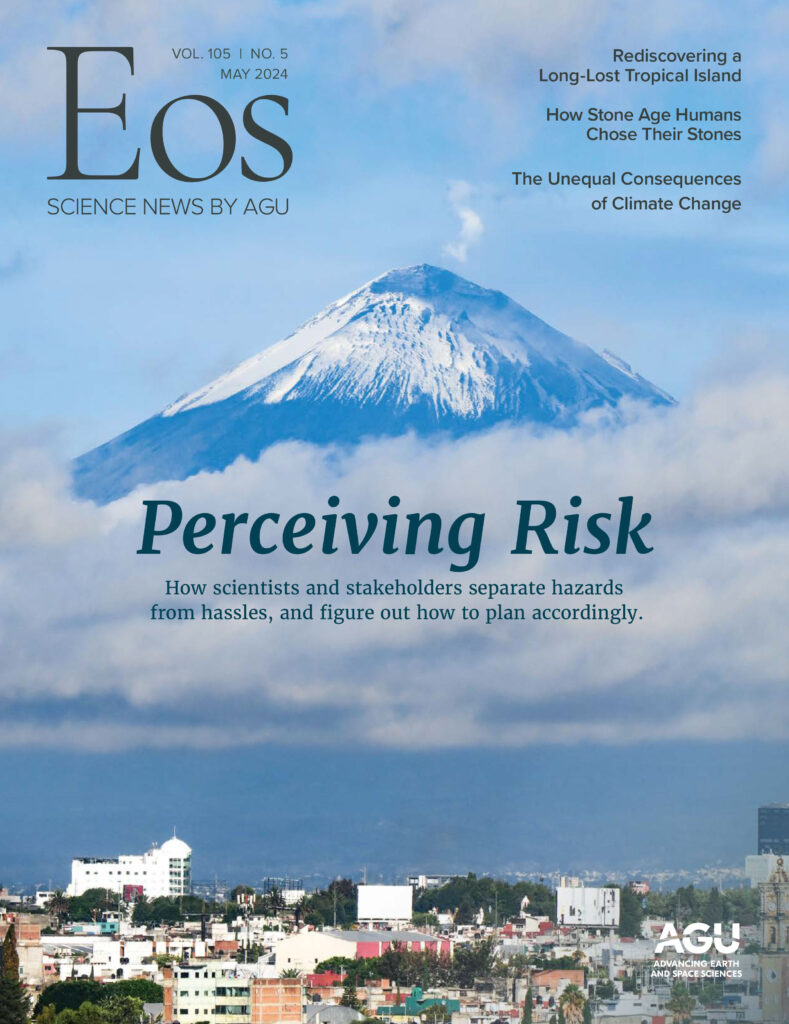In 2016, a seismic event shook Oulu, Finland, shooting cracks through building foundations and spurring reports of tremors and loud noises.
It wasn’t an earthquake.
Rather, this was a frost quake: shaking caused by the rapid freezing of water in the ground. Frost quakes belong to a group of seismic events called cryoseisms, which all involve freezing. They’ve been reported across polar regions and as far south as Chicago and Connecticut. Scientists are still working to determine exactly what factors contribute to frost quake frequency and what risks they pose.
In a new study, researchers found that many frost quakes in Finland originate in areas with higher water tables and accumulating water, such as swamps, wetlands, and drainage channels, as well as paved areas. “It was a big surprise to us that we found events from these completely different kinds of surroundings,” said Kari Moisio, an author on the preprint and a geophysicist at the University of Oulu.
They also quantified the ground shaking caused by the frost quakes, determining that some caused tremors and infrastructure damage comparable to earthquakes.
Wiggling Wetlands
To catch frost quakes in action, researchers installed seismic arrays and soil temperature sensors at two sites in Finland: one in subarctic Oulu and another in the Arctic town of Sodankylä. The equipment recorded data from November 2022 through April 2023.
The hundreds of seismic events identified by the researchers fell into two categories: “frost quakes” that created waveforms similar to tectonic events and “frost tremors” that created more irregular waveforms. Rowan Romeyn, a geophysicist at a Norwegian research institute called Nofima who studied cryoseisms in his doctoral work, said “frost tremors” had similarities to waves produced by cryoseisms that happen within sea or lake ice. Romeyn was not involved in the new study.
The team compared the frost quakes to known earthquakes using the Modified Mercalli Intensity (MMI) scale, which ranks the observable effects and damage of seismic events. The strongest cluster of frost quakes the team measured in Oulu, which occurred on 1 April 2023, produced vertical and horizontal ground motions corresponding to MMI V, indicating moderate shaking and light damage. Residents reported ground shaking, unusual noises, and new fractures on roads.
Shaking from the quakes was about 10 times stronger than what would have been produced by a nearby passing cargo train, according to the researchers. Quantifying the ground movement caused by frost quakes was an important step for cryoseism research, Romeyn said.
“Even though the frost quakes are quite small, if they happen close to something, you can still get quite a lot of shaking [there].”
“Even though the frost quakes are quite small, if they happen close to something, you can still get quite a lot of shaking [there],” Romeyn said.
The quakes happened during an extremely rapid drop in temperature from −9.6°C (14.7°F) to −21°C (−5.8°F) over an 8-hour period, about a 1.4°C (2.5°F) per hour decrease. Most frost quakes happen when temperatures are far below freezing and drop at least 1°C (1.8°F) per hour, Moisio said.
Beyond temperature, other factors such as soil moisture contribute to frost quake frequency. “If there’s lots of water, then there are usually a lot of events,” Moisio said. His team is currently researching how soil type contributes to frost quakes.
Most of the frost quakes observed in Oulu were located on irrigated wetlands, and about half the events in Sodankylä were caused by ice fracturing on the Kitinen River, which runs through the town. The study is the first detection of frost quakes originating in wetlands, according to the researchers. Those that did not happen in wetlands were located on roads and other paved surfaces.
Snow, Rain, and Seismic Risk
As northern latitudes begin to see more rain instead of snow, with more frequent ground saturation, frost quakes might become more common, Moisio said.
Ice freezing on top of snow—another phenomenon increasing because of climate change—and an overall decrease in snowfall could also increase the likelihood of frost quakes, Romeyn said. That’s because snow tends to insulate the ground from rapid temperature changes, whereas ice transfers temperature change to the ground more quickly. “If you have more ice on the ground instead of snow, you should have more [frost quakes],” he said. One 2016 paper that analyzed a surge of frost quakes in Canada also suggested that an increase in winter days above freezing temperatures contributes to frost quake frequency.
As climate change advances, frost quakes “should be considered” potentially damaging events in seismic hazard assessments, the authors wrote. Romeyn said the climate link could be more complicated, though, especially if climate change eventually makes freezing temperatures rare in polar regions.
“This research always brings up new questions.”
A lack of long-term data on frost quakes means scientists aren’t sure yet whether their frequency has actually increased. Moisio said his team hopes to extend their observations for multiple years and across larger areas to bring frost quakes into further focus. “This research always brings up new questions,” he said.
Romeyn agreed with the authors that frost quakes should be considered in seismic risk assessments and said that buildings in areas at higher risk for frost quakes may need to spend more on maintenance. But catastrophic frost quakes—those that claim lives or topple houses—are highly unlikely.
It’s also important, Romeyn said, to untangle whether cryoseisms are the primary risk factor in an area, he said. For example, other freeze-related geotechnical events, such as permafrost thaw and subsequent land subsidence, also damage infrastructure.
—Grace van Deelen (@GVD__), Staff Writer


